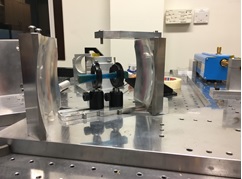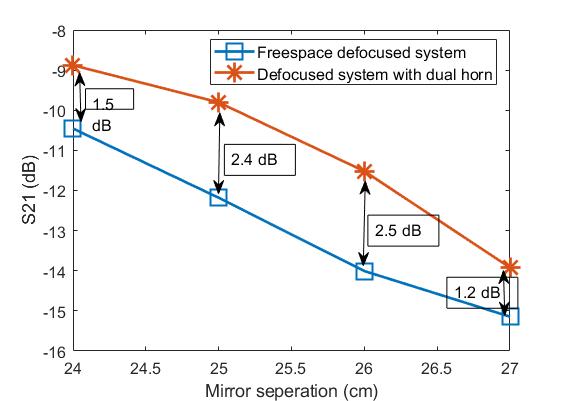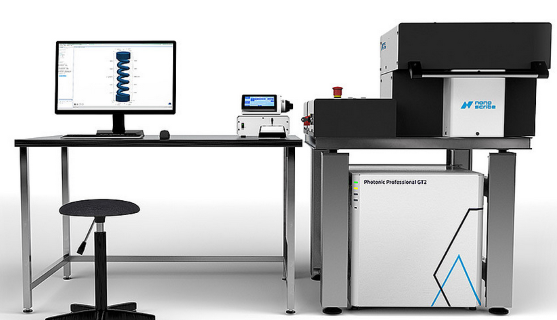Digital and Additive Manufacturing of Antennas
The group is actively working on modern methods of manufacturing of microwave, mm-wave and THz antennas and devices. It includes additive manufacturing of devices in collaboration with other institution (University of Nottingham, Imperial College London, University of Leeds) as well as investigation of digital manufacturing at the site, using novel facilities, precise 3-D nano printing, etc.
3-D Printed 300 GHz Horns for Bio-Medical Research
Rostyslav Dubrovka, Robert Donnan
Although the measurement of biological fluids at terahertz frequencies is well known. An entirely new and unconventional method of characterising them using a 3D-printed back-to-back dual horn has been introduced by our THz research unit. The dual 300 GHz horns have been fabricated (University of Nottingham) using various methods like pure metal 3-D printing or stereolithography, followed by gold sputtering. Both have a central cavity allowing for the integration of microfluidics. However, only the latter has been successfully made and used in the preliminary measurements [1]

Figure 1: Back-to-back horns; (a) corrugated; (b-d) pyramidal.
We have directly measured an increase of 2.5 dB in the signal strength when the dual horn is introduced in a defocused quasi-optical transmissometer system. Hence, the defocused QO transmissometer, in conjunction with the 3D-printed dual horn, can be used as a system for THz biomedical and chemical spectroscopy. The work presented will be not only of interest to the biomedical community, but additionally to the growing sub-THz and THz research communities where resonant cavity (inherently narrow-band) modalities predominate.


(a) (b)
Figure 2: Results of measurements of the transmitommeter with and without the back-to-back horn: (a) the measuring setup; (b) measured results
[1] Rostyslav Dubrovka; Andre Sarker Andy; Robert Christopher Jones; Max Munoz Torrico; Robert Donnan, "Adjustment of the Z-Bench Transmissometer for Biomedical Measurements at 300 GHz Using a 3-D Printed Back-to-Back Horn", 2020 IEEE Ukrainian Microwave Week (UkrMW), 21-25 Sept. 2020, DOI: 10.1109/UkrMW49653.2020.9252661, https://ieeexplore.ieee.org/document/9252661
3D Printing of Novel EM Devices
Yang Hao, Henry Giddens
The emergence of additive low-cost manufacturing techniques over the last decade has offered new opportunities for realising spatially varying devices typical of those designed using transformation optics. Our research has focussed on developing novel 3D printing techniques for fabricating GRIN devices such as conformal lens antennas covering frequency bands from microwaves to THz. Various demonstrators developed with the industry include an 8-segment switched GRIN antenna with optimised radiation patterns, compressed Luneburg lenses with beam steerable radiation pattern at 84 GHz, and a beam steerable GRIN lens at 0.3 THz. All antennas can be fabricated using low-cost FDM printing with multiple dielectric filaments.

Figure: 3D printed gradient-index antennas from transformation optics. Various designs have been demonstrated spanning the microwave to THz frequency bands using multi-material dielectric 3D printing.
Highlights and Research Outcomes

